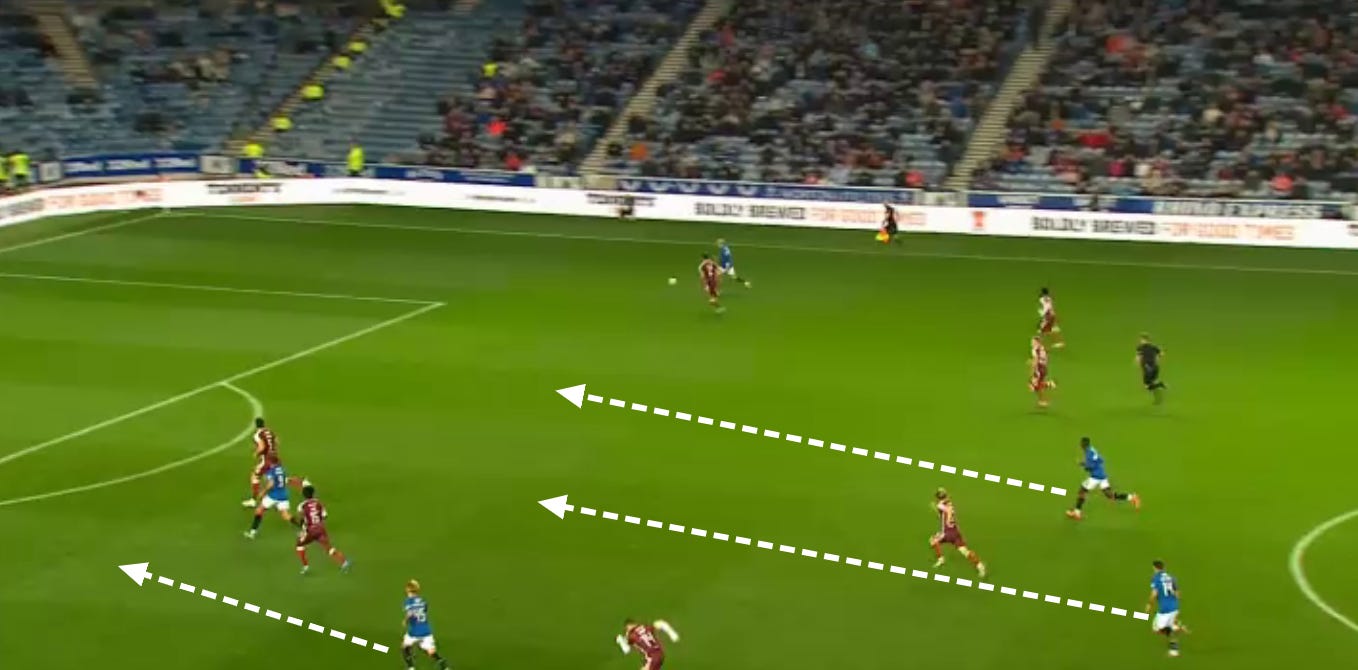The three key things Killie have to do to get a result against Rangers on Sunday
The Ibrox side don't like coming to Rugby Park, and here's how Derek McInnes' side can make it difficult
Rangers don’t like coming to Rugby Park.
Though their fans - and often players - will point to the artificial surface by way of excuse, the simple fact is they don’t have a great record in East Ayrshire.
Since January 2019 there have been eight meetings at Rugby Park in all competitions, with three Killie wins, four for Rangers - all by a single goal - and a 0-0 draw across that spell.
For a team whose fans expect them to win every game that’s not the most auspicious of records, especially with pressure already beginning to build on manager Philippe Clement.
That said, the visitors will of course be huge favourites to win on Sunday and for good reason, their financial advantage over every team in the league bar Celtic means they should win every game, at least on paper.
As the cliché goes though the game isn’t played on paper, and this isn’t a Rangers side which strikes fear into the heart.
Here are the three key things Killie have to do to get a result.
Read More:
Every word from Derek McInnes as Killie boss previews Rangers
Robby McCrorie 'ingrained' in Kilmarnock ahead of reunion with Rangers
Dundee analysis: Two changes from McInnes prove crucial for the first win of the season
Don’t get overwhelmed
Rangers are not as good as Celtic, which should be obvious to anyone who’s watched even a little of either side, but they also don’t play in the same way.
While Brendan Rodgers’ side look to pull a team out of its shape with quick passing and off the ball movement, Clement’s aims to play forward as quickly as possible and overwhelm with numbers.
Take this passage of play against St Johnstone.
Captain James Tavernier picks the ball up and immediately goes up the line to Václav Černý.
Then bombs on ahead of the Czech to join the attack.
By the end of the move he’s in the box almost taking up the position of a striker.
Rangers look to get the ball forward quickly and get numbers in the box, and that dynamic between Černý and Tavernier was clear against St Johnstone.
When Tavernier eventually receives it back there are no fewer than six Rangers players either in the box or just outside of it, and if we look at the pass network we can see how much they looked to exploit that right hand side.
Not getting overwhelmed by sheer weight of numbers will be important, both in defending and in playing out.
Rangers will look to press very high up the pitch.
One way to measure this is passes per defensive action (PPDA), which is essentially how many passes a team allows the opposition to make before trying to win the ball back - the lower the number the more aggressive their press.
For Killie in the Premiership so far this season that number is 12.35, for Rangers it’s 7.65.
The below graphic shows that number, plus other indicators of pressing such as defensive distance (how far from their own goal a team attempts a defensive action), counterpressure regains (how often a team wins the ball back immediately after losing it) and aggression (the proportion of an opponent’s passes received that are pressured within two seconds.
The difference in styles becomes more apparent when we put Killie’s numbers so far this season on the same chart, overlaid with Rangers.
As is immediately obvious, Rangers press more higher and more aggressively while McInnes’ side are superior on set pieces.
One other key area of difference though is counter-attacking shots conceded: Killie conceded just 0.57 per 90 minutes on the break but for Rangers allow 1.29.
Which brings me nicely on to the second key to the game.













